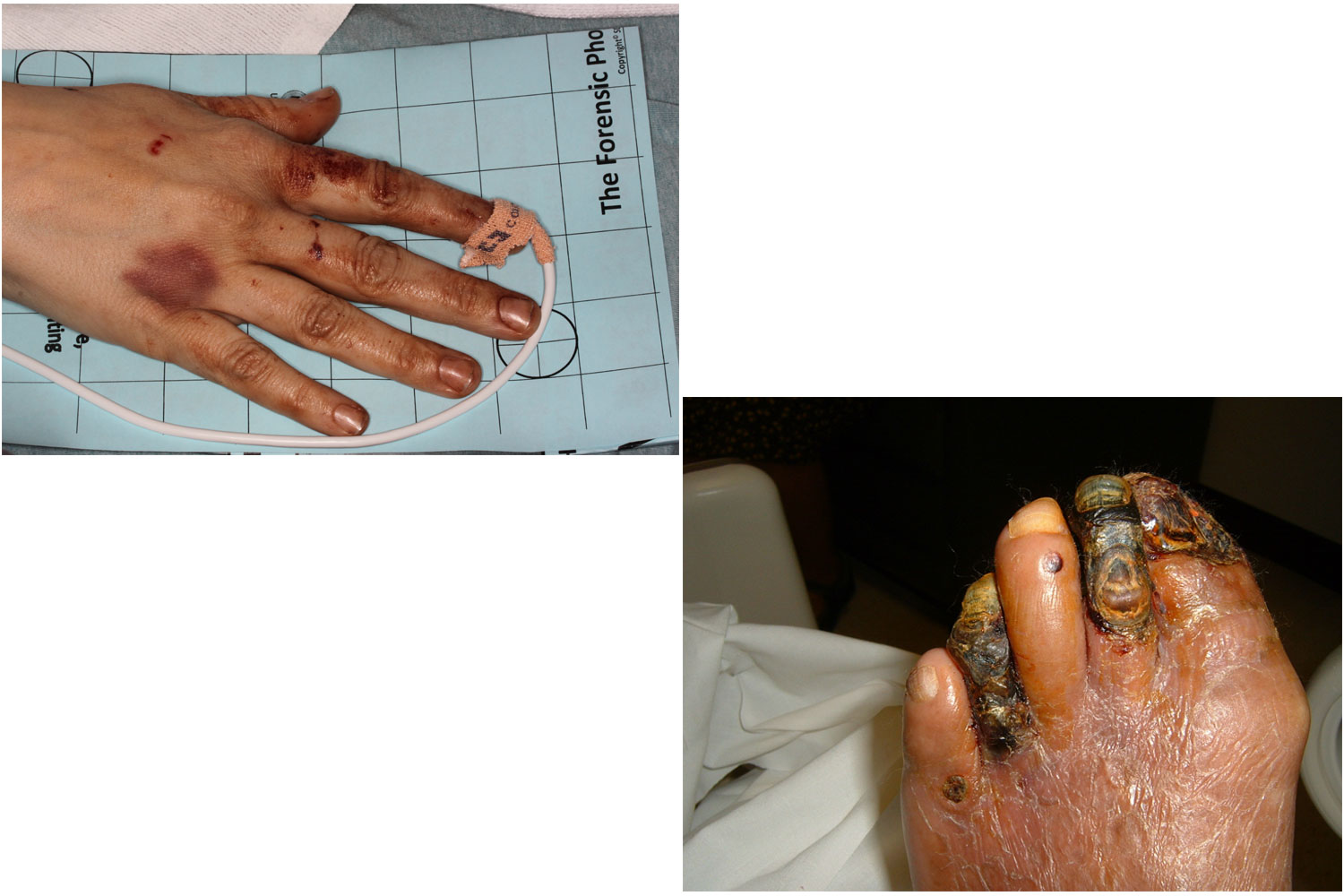2376-0249
Case Blog - International Journal of Clinical & Medical Images (2014) Volume 1, Issue 5

Author(s): Evangeline Barefoot
When injured patients arrive in the emergency department they are rapidly accessed and treated according to their condition. The mechanism of injury (MOI) is either related to an unintentional act such as a fall or auto accident or more sadly, an intentional act such as an assault or act or terrorism. Documenting the injuries can become critical to investigators following such MOI’s. Careful and considerate photo-documentation is not only preferred but highly recommended in such cases. Everyday across the globe, our patients come to us with a variety of medical needs. Some of those needs involve management of a disease process and other times they are victims of circumstance. In either case careful and thorough documentation are keys to continuity of care, instruments of record, and perhaps, the tool that accurately recalls what happened to your patient while in your care. Adding photography to record patient outcomes is not a new process and has been in place for many years. Surgeries are recorded and photographed so that the patients’ case may be studied by other medical professionals, wound management specialist photo document the progress or lack of progress of stasis wounds, and victims of abuse, especially children, are often photographed to help provide important information to law enforcement. Today there are more and more benefits to using photo-documentation in the healthcare setting. This is a cautionary tale, though, as many times photos are being taken using misguided intentions. Several years ago while working as a director of nursing for a local skilled nursing facility, I was approached by a family member of a patient and he stated that his mother had fallen the day before and lay on the ground for twenty minutes before anyone helped her. My first instinct was that of horror, and I said I am so sorry, please allow me look into this right away. Mr. James, my patients’ son, thrust a cell phone in my face with a photo of his mother lying on the ground at the foot of her bed. I replied by saying “Oh, you were there? He responded with a firm, “yes, I was and I am going to sue”. I asked if I could have a copy of the photo’s to help with my investigation and he complied. I spent the next week finding out everything that I could about what had happened. The patient, unfortunately, did break her hip and had to have surgery and skilled nursing care and rehab. The State came and investigated and I provided them with the information that I had gathered and they did their own investigation. In the end the State cleared our facility of any wrong doing or neglect but that did not stop Mr. James. In the end, it was his set of photos that showed that we responded within moments of her fall. Mr. James was in the room but on his phone and did not see his mother get out of the bed and try to go to the bathroom on her own. Mr. James had the call light in his chair and she could not reach it (according to the States’ interview with the patient). The photo’s he took were time stamped and showed that fromthe time of the first picture to the last picture was less than a minute and three of the photos were of staff members assisting the patient with a pillow and blanket (they were trained not to move her before trained trauma care staff arrives). As a forensic nurse, I have witnessed tremendous advances in technology. When I graduated from nursing school 23 years ago, video tapes were occasionally made in surgery of larger teaching type hospitals and instamatic type photos were taken in very special situations. Large sexual assault programs had colposcopes with camera attachments and we used either instamatic cameras or 35mm cameras. We would not have any idea of if we captured what we saw until we either waited for the picture to “set” or worse, didn’t see the pictures ever as the roll of film was given to law enforcement. Today High Definition digital rules and its uses within healthcare are endless. In the emergency department we take photos for a variety of conditions. Assaults, abuse, burns, lacerations, dog/ animal bites, cellulitis, and drug reactions are all useful areas to document. Photo documentation is not a replacement for careful and considerate documentation and use of diagrams but no amount of diagraming can demonstrate pain and discomfort but a photo can. Before you or a staff member ever clicks a shutter, you should review your facilities policy regarding photo-documentation of patients. Many facilities strictly prohibit any types of photography unless it is expressly consented in writing by the patient or their representative. This is an excellent policy and is written to protect the patient, the facility, and the staff. High resolution photography is a tool that should be, not just considered, but made a standard of practice.
*Corresponding author: Evangeline Barefoot, Forensic Nursing Consultant, St. David’s Round Rock Medical Center, USA, Tel: 512- 422-8502; E-Mail: vbarefoot@hotmail.com
 Awards Nomination
Awards Nomination

